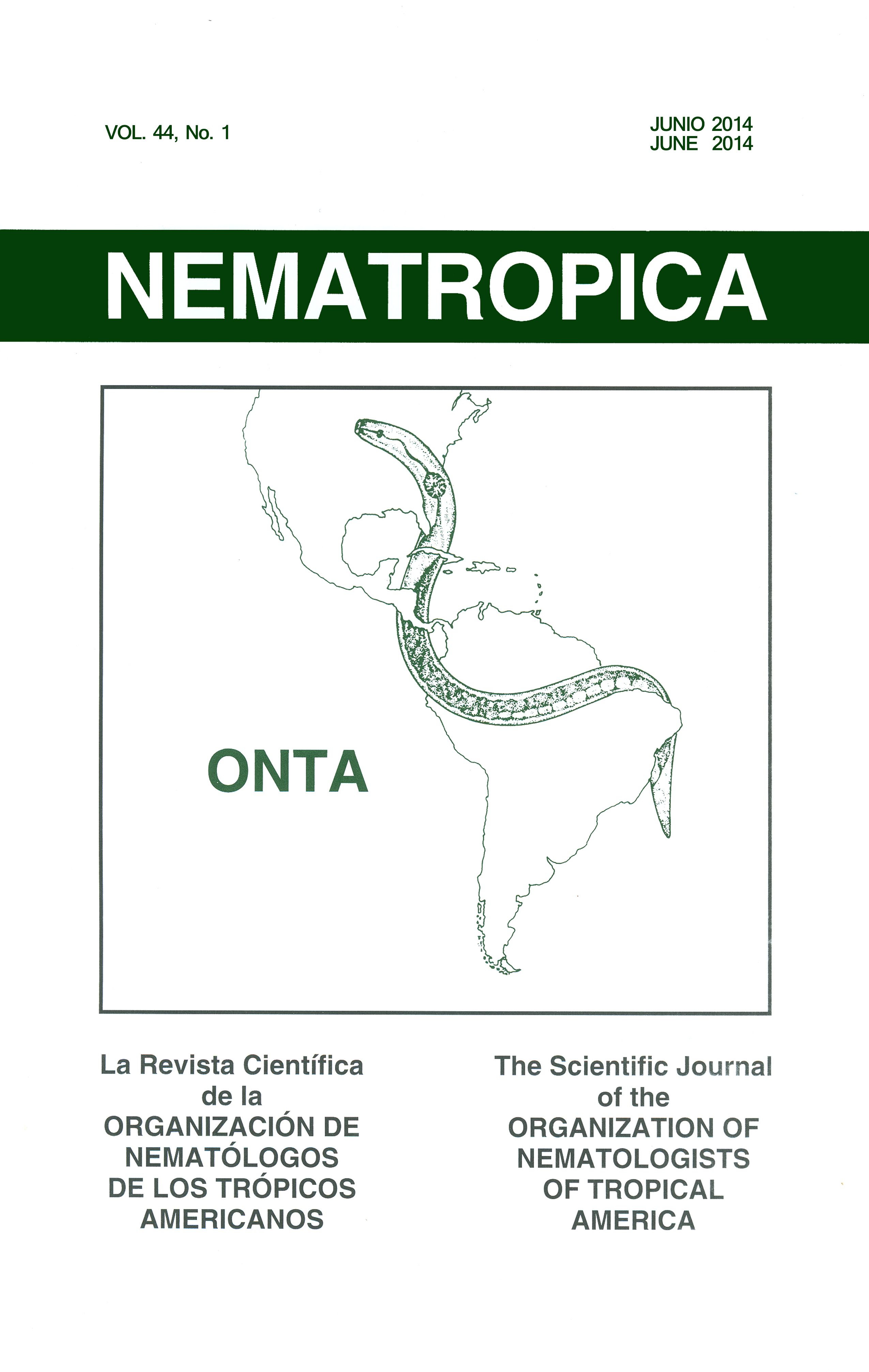Crop sequence in the management of dry rot disease of yam under field conditions
Palabras clave:
Dioscorea, management, Pratylenchus coffeae, Scutellonema bradysResumen
Among the constraints to yam (Dioscorea spp.) production in Brazil, the dry rot disease caused by Scutellonema bradys, Pratylenchus coffeae, and P. brachyurusis the most important. These plant-parasitic nematodes are largely disseminated in the main areas of yam production in Alagoas state. The objective of this study was to evaluate the efficacy of cropping sequence on a mixed population of S. bradys and P. coffeae to increase yield in a naturally infested area. A field experiment was carried out in Quebrangulo County in two consecutive years in a randomized block design with thirteen treatments and control, with three replications. Prior to planting, soil composite samples were collected in each plot to determine the initial nematode population densities. In the first year, the treatments consisted of plots grown with Brachiaria humidicola, Canavalia ensiformis, Crotalaria juncea, C. ochroleuca, C. spectabilis, Digitaria decumbens ‘Pangola’, Ipomoea batatas ‘Sergipana’, Manihot esculenta ‘Rosinha’, Pennisetum purpureum ‘Roxo’, Phaseolus lunatus ‘Branca’, Phaseolus vulgaris ‘Mulatinho’, Vigna unguiculata ‘Corujinha’, Zea mays ‘BR 106’, and Dioscorea cayenensis ‘Inhame-da-Costa’. At the end of the growth cycle, soil and root samples were collected to assess nematode population densities. In the second year, the entire experimental area was planted with yam, and after 9 mon, the tubers were harvested and tuber fresh weight/plot, dry rot incidence, and nematode densities for both soil and tuber samples were determined. The highest production of healthy yam tubers was recorded on plots previously planted with Crotalaria spp. and P. lunatus. Growing these plants, mainly C. spectabilis in infested areas with both S. bradys and P. coffeae, is a suitable technology to control the dry rot disease of yam undermonths of field conditions.Descargas
Publicado
2014-06-01
Número
Sección
Articles

